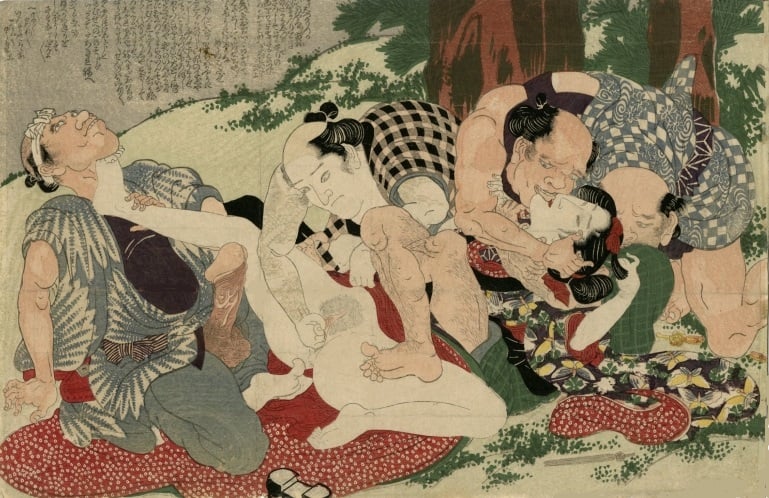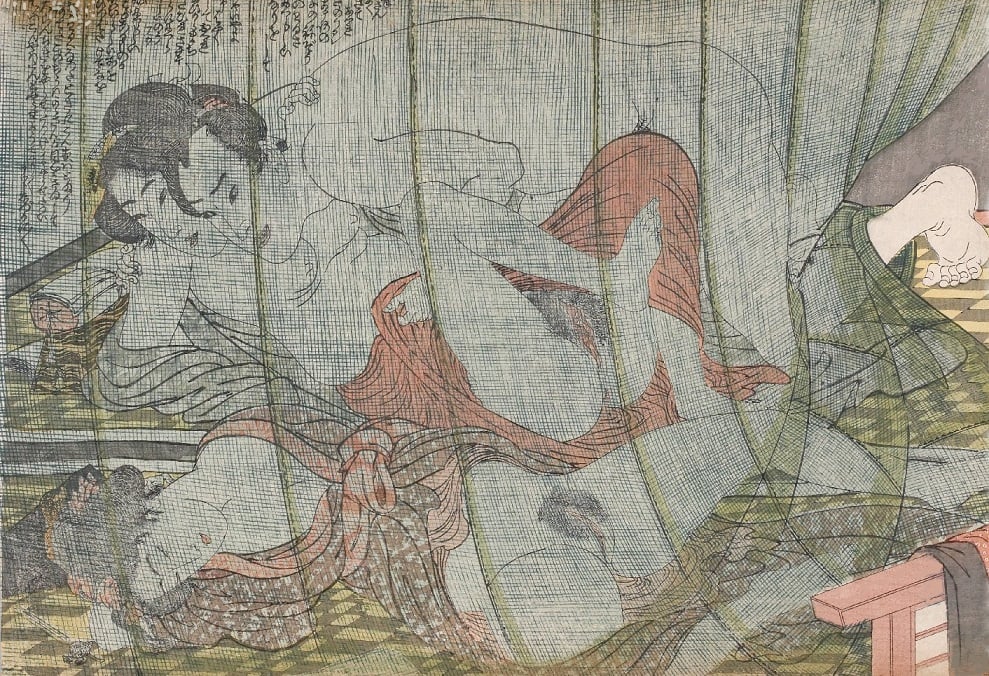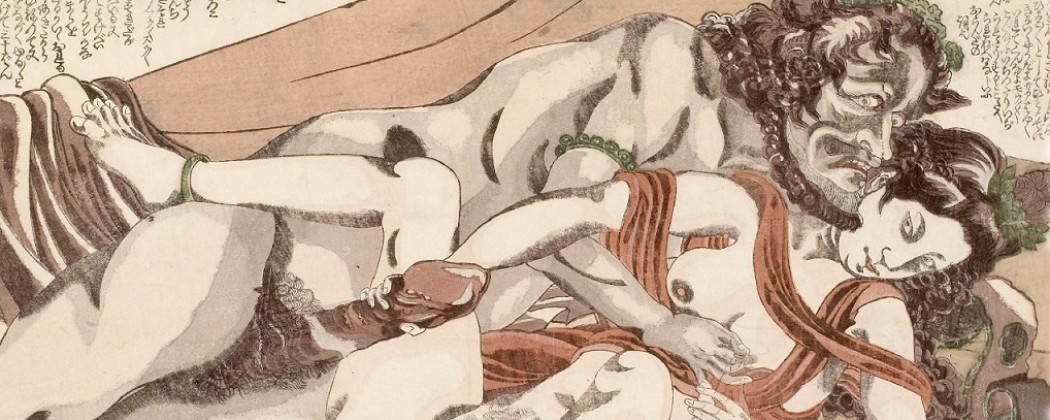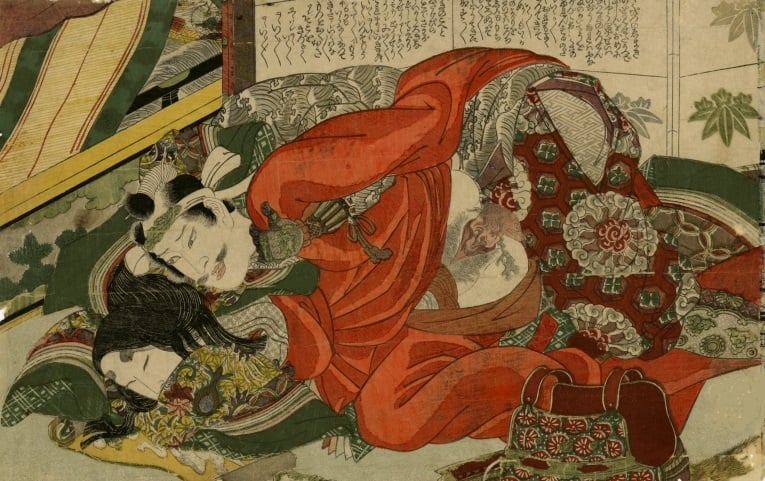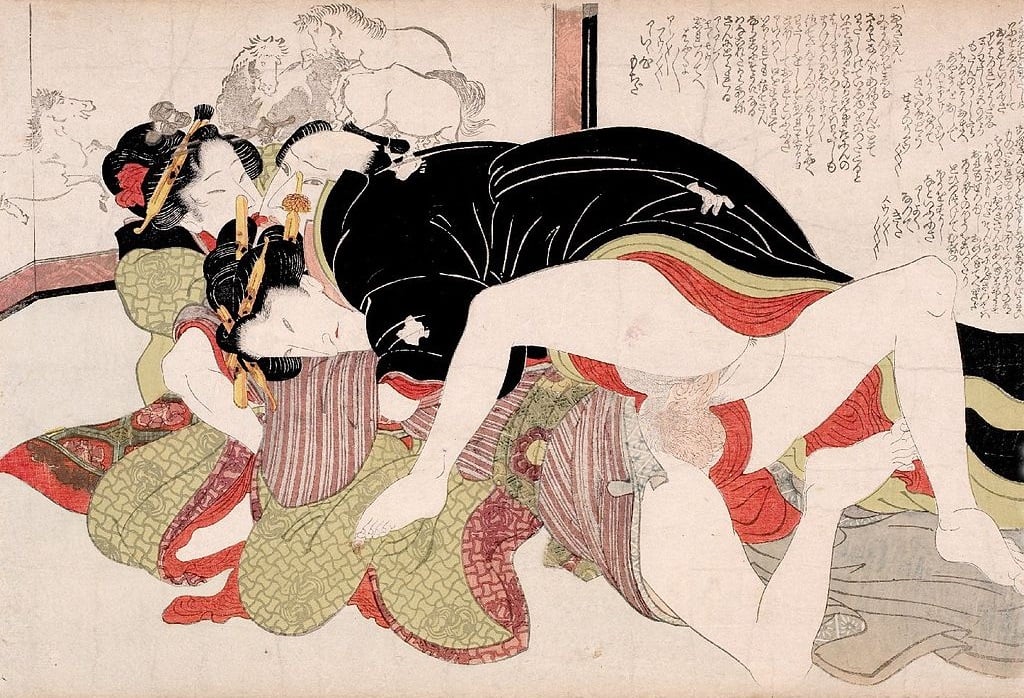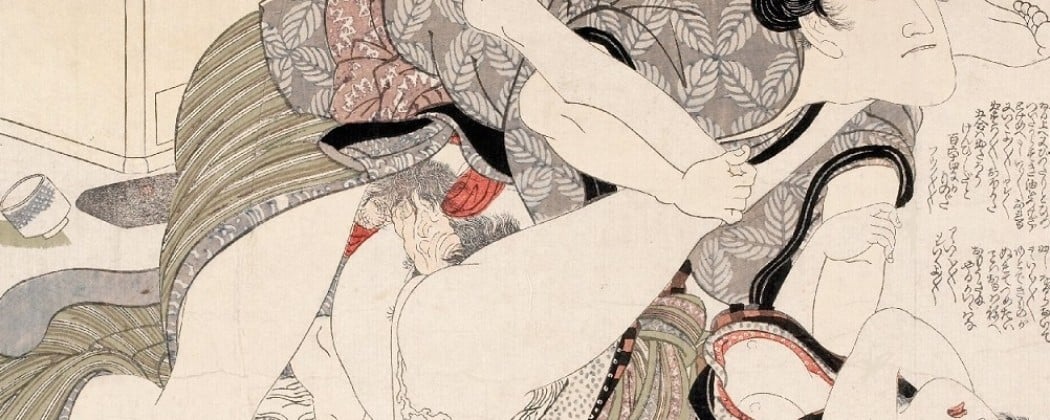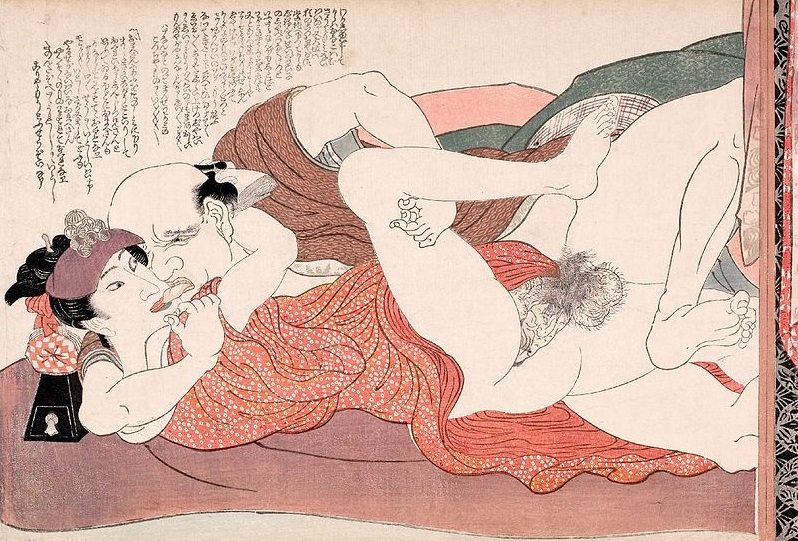
The exquisite shunga below is plate 8 from Yanagawa Shigenobu*(1787-1833)’s masterpiece ‘Willow Storm (Yanaga no urushi)‘ that was published in the late 1820s. It portrays a kabuki wakashu (a young boy prostitute, also known as iroko) who is being bought for the evening. This type of subject matter is uncommon even in shunga (and even more in this larger oban format).

‘Wakashu boy with an ugly client‘ (late 1820s) from the series ‘Willow Storm (Yanagi no arashi)‘ by Yanagawa Shigenobu (1787-1833) is the 10th plate from his masterpiece ‘ Willow Storm ‘ published in the late 1820s. Palanquin Bearers It exhibits a gang rape scene..
Repugnant
The repugnance the male client’s face invokes as he extends his tongue salaciously toward the wakashu is very aptly displayed.
Gracious
The eminent shunga scholar Yoshikazu Hayashi: “…At first I took this highly skilled, gracious wakashu for an Edoite, but it appears that he is actually from Osaka, having accompanied one of his regular clients down to the Shogun’s capital.”**
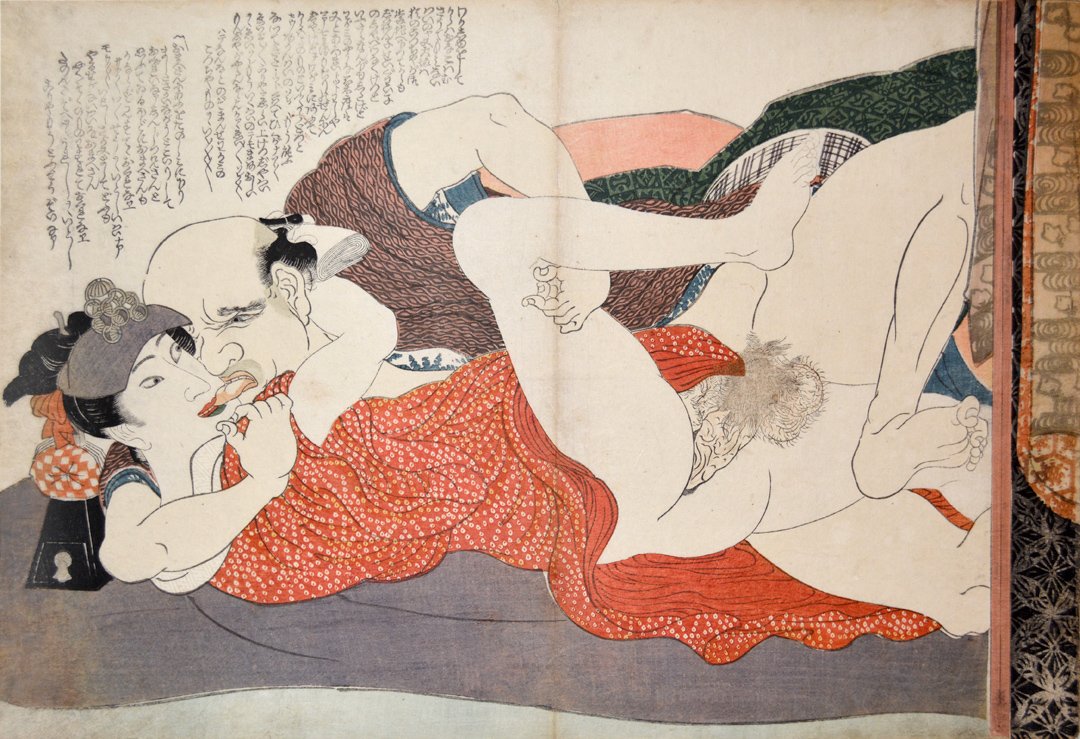
Another impression
Playing Female Roles
Wakashu were actors by profession, but too much work in the theater made it difficult for them to meet their clients. So they typically tried to find the best patrons they could, who would make it possible for them to skip their duties in the theater. They played female roles, but being men, they shaved their forelocks and are usually shown, as here, with their foreheads covered in purple cloth.
Hairpin
These were known as murasaki-boshi (purple hats). Visible on top of the hat is an ornamental hairpin which keeps it in place. The white section of the collar of the boy’s undershirt is covered in a scabbard pattern carved without pigment but in may not be visible in the picture.
Click HERE for more fascinating content on gay shunga !
*Shigenobu was the talented pupil of Katsushika Hokusai who was also his father-in-law.
**Vol.4 of ‘Teihon ukiyo-e shunga meihin shusei (The Complete Ukiyo-e Shunga), 1997′ by Hayashi Yoshikazu


